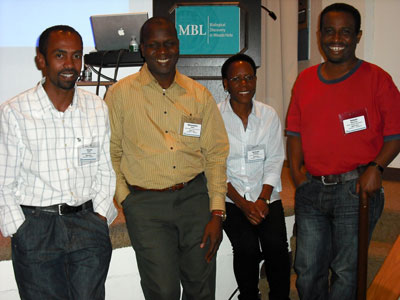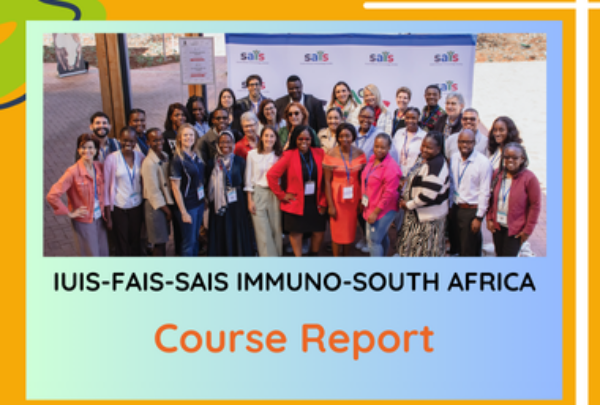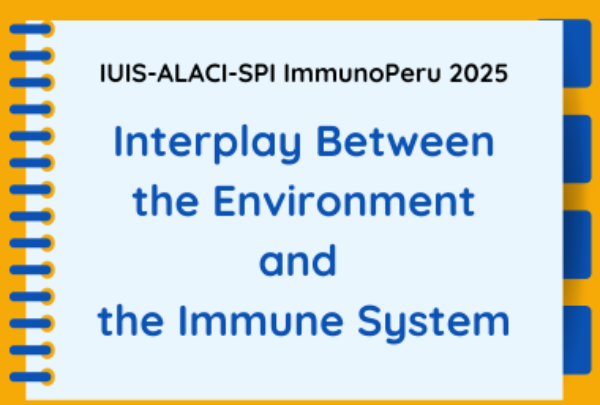Marine Biological Laboratory, Woods Hole, MA, USA
Organizers: Drs Markus Mohrs and Fabienne Tacchini-Cottier
Funded by TDR (UNICEF, UNDP, World Bank, WHO), Trudeau Institute, IUIS, and WHO Immunology Research and Training Centre, University of Lausanne, and Biocompare.
IUIS fellowships contributed to the expenses of four participants from developing countries.
The 14th Woods Hole Immunoparasitology (WHIP) meeting was a great success. There were 150 participants and outstanding presentations and lively discussions. Four participants from developing countries were selected to attend and present their results to the meeting.
 The recipients are listed below:
The recipients are listed below:
Gertrude Kiwanuka, PhD
Department of Biochemistry, Mbarara University of Science and Technology, Uganda
“Plasmodium falciparum Erythrocyte Binding Antigen-175 and Development of Malarial Anaemia”
Tamrat Abebe, PhD Candidate
Department of Microbiology, Immunology & Parasitology, Faculty of Medicine, Addis Ababa University, Ethiopia
“Local and Systemic Arginase Activity in Patients with Cutaneous Leishmaniasis”
Mahamadou Diakite, PharmD, DPhil
Malaria Research and Training Centre, Faculty of Medicine, Pharmacy & Odontostomatology, University of Bamako, Mali
“Hemoglobin and red blood cell polymorphisms that confer protection against severe Plasmodium falciparum malaria are exceedingly common in Mali”
Seleshi Kebede, PhD Candidate
Aklilu Lemma Institute of Tropical and Infectious Diseases, Addis Ababa University, Ethiopia
“Visceral Leishmaniasis in Bira Abo: Sero-Epidemological and Leishmanin Skin Test Survey”
The first three participants presented their work orally and their presentations generated several questions and an interesting discussion that followed during the many opportunities for participants to interact with other participants and principal investigators during tea breaks, lunches, dinners and poster sessions. The fourth candidate presented his results as a poster and benefited from a lot of discussion. The poster session, organized in two special sessions attracted all participants of the meeting and was very successful. The meeting gave them the opportunity to meet scientists working on parasitic diseases but also offered them a possibility of networking with other research groups.
The main sessions by a large array of stellar investigators were on Cell Migration, Alternate Activation, Innate Immune Responses in the Skin, Immuner Regulation, Dendritic Cells, T Helper Cell Responses, Granulocytes, Parasites/Coinfections. There were also 98 oral presentations or posters by participants.







